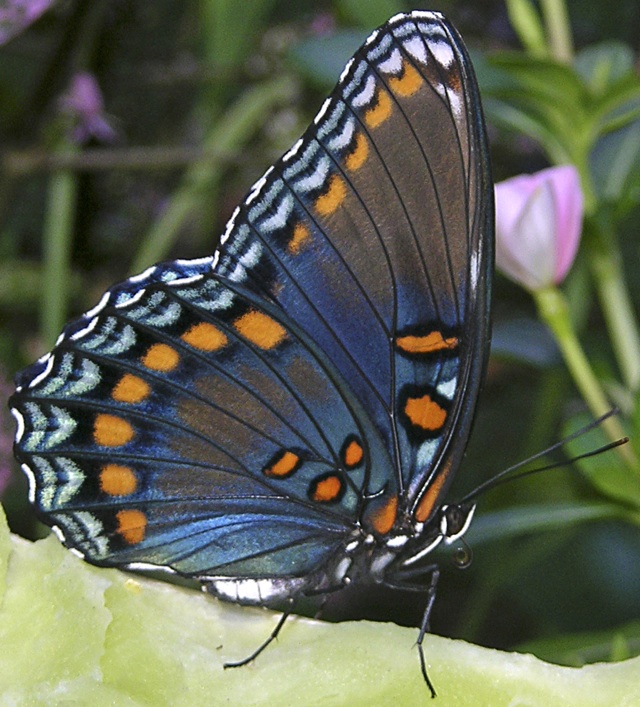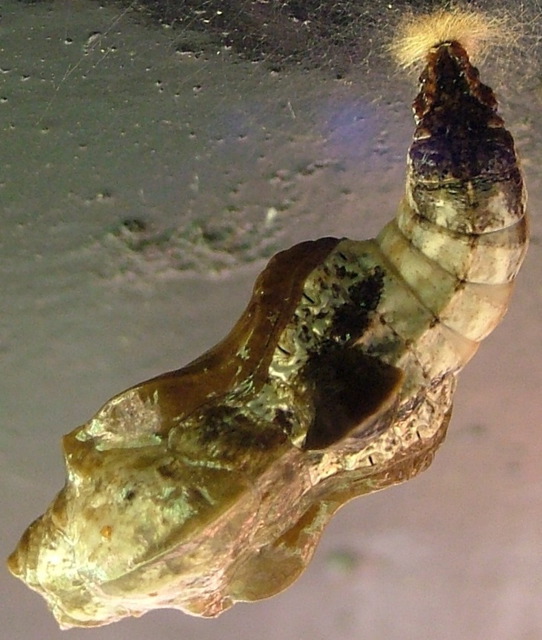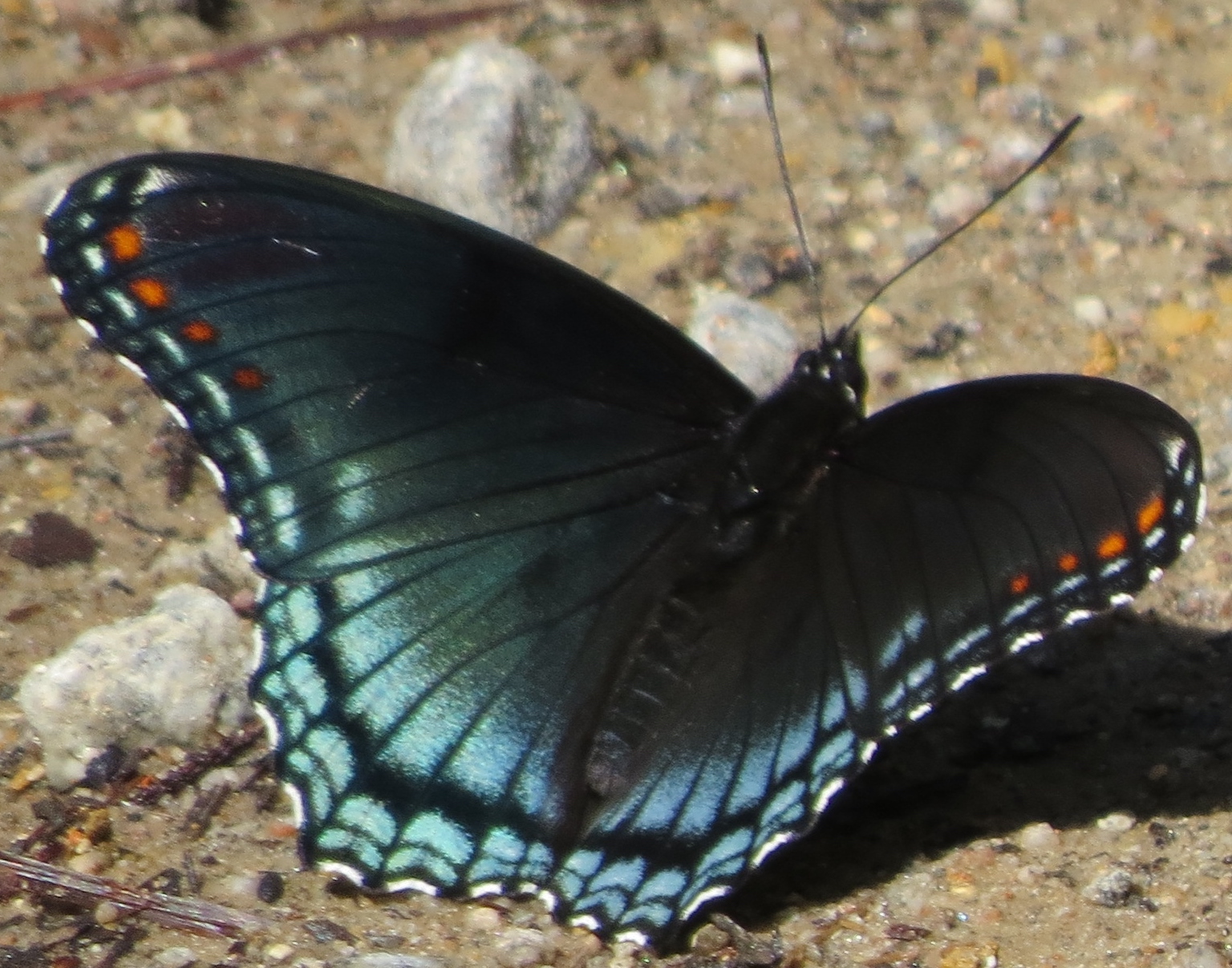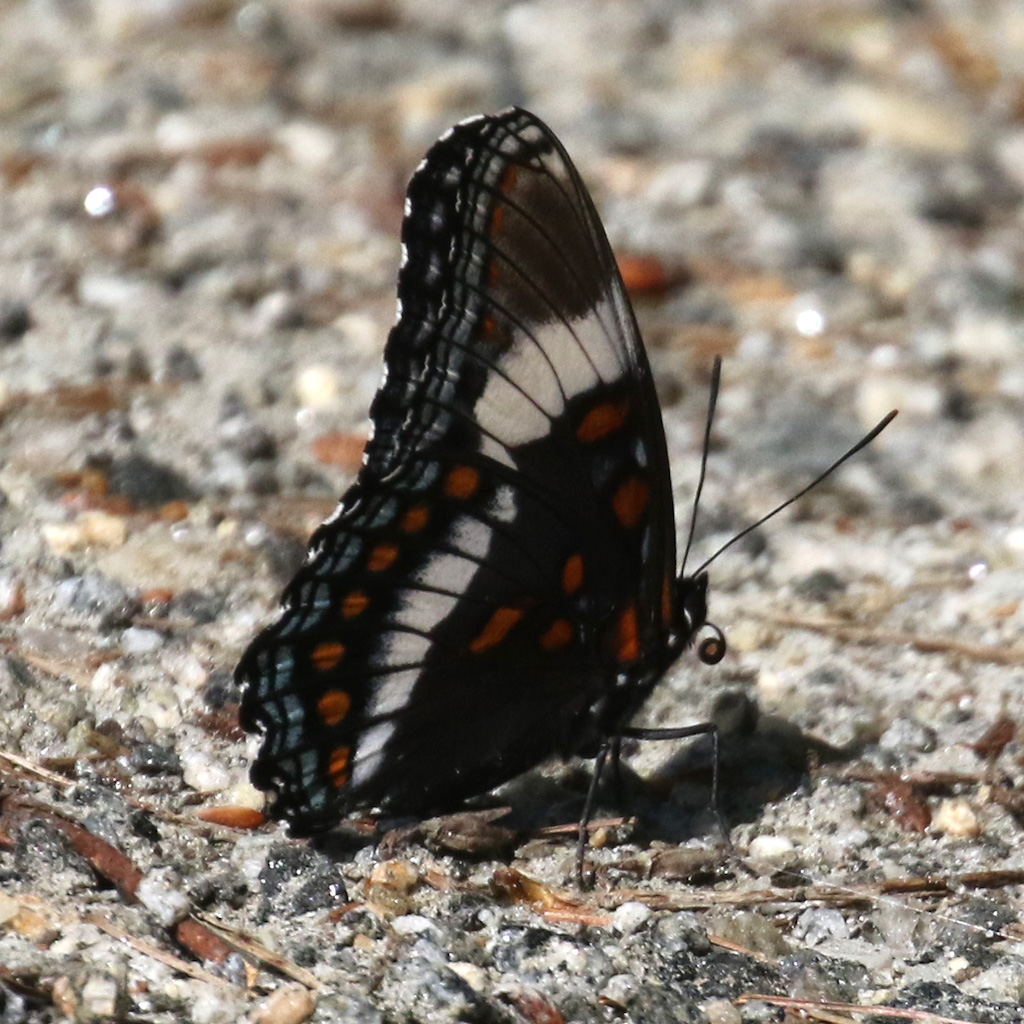|
| Common Name | Red-spotted Purple by Roger Rittmaster => Durham Co.
[View PDF]
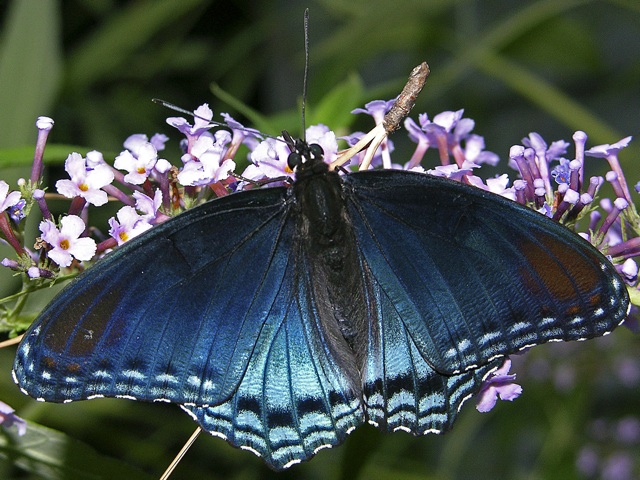 Click to enlarge Click to enlarge
[Google Images] GBIF [Global Distribution ] BoA [Images ] iNaturalist |
| Scientific Name | Limenitis arthemis astyanax
|
| Link to BAMONA species account. |
| Map | Click on a county for list of all database records for the species in that county.
 |
| Distribution | DISTRIBUTION: Statewide, occurring in all counties; also widespread along the immediate coast, such as the Outer Banks.
|
| Abundance | ABUNDANCE: Common and widespread, though seldom seen in large numbers. Abundance reasonably even across the state, not obviously more common in some provinces than others except near the coast, where generally uncommon.
|
| Flight | FLIGHT PERIOD: Apparently three broods, extending from mid-April to late October; rarely as early as the late March and into November. The first brood seems to end during the first half of June in the Coastal Plain and Piedmont, and in late June in the Mountains. The flight after this gap seems to have two broods that run together, though it is possible that the second brood is simply very broad in time (four months or longer).
|
| Habitat | HABITAT: Typically in or near hardwood forests or their borders. It favors openings or edges of rich or moist woods, but it is also found along powerline clearings in uplands, as well as wooded yards and sparingly in gardens. It can be seen flying around roads and fields, but it would be misleading to give the impression that it is a denizen of wide-open places. Largest numbers are seen on dirt roads through bottomland forests.
|
|
| | Plants | FOOD AND NECTAR PLANTS: Foodplants are leaves of hardwood trees, such as cherries (Prunus spp.) and other trees in the rose family (Rosaceae). It has a wide array of such food trees. The species nectars to some extent, but it is more often seen perched on damp ground sucking moisture, or taking tree sap, carrion, etc.
|
| Comments | COMMENTS: This conspicuous and attractive butterfly is often mistaken as a swallowtail by the novice. It is one of the more frequently seen butterflies flying through hardwood forests, particularly open woods, along wooded trails, and dirt roads through forests. Many are run over by cars on dirt roads. Though not normally seen in colonies, I have seen as many as 20 individuals in a day on several occasions.
The Red-spotted Purple (L. arthemis astyanax) is the Southern counterpart of the other subspecies, the White Admiral (L. arthemis arthemis), which is dark with a single wide white band on each wing. Because most Limenitis species are known as Admirals (e.g., Lorquin's and Weidemeyer's), the NABA Checklist (2001) and NatureServe Explorer give the common name for the full species as "Red-spotted Admiral", which is the sensible name for the full species. However, to avoid confusing butterfliers in NC, we prefer to use the subspecies name -- used by most references that include the Butterflies of America website -- on the header line.
On April 25, 2022, Will Stuart photographed this other subspecies (White Admiral) -- or perhaps we should say "phenotype"-- in Polk County. His photo (below) clearly shows the broad white band cutting across both the fore wing and the hind wing. However, as the White Admiral is a Northern form and ranges south only to PA, and as this NC record came in the spring season, experts feel that this is likely a "glitch" of the reproductive system. As Rick Borchelt said on the Facebook Carolina Leps group: "we occasionally have an arthemis phenotype pop up in our sea of astyanax. I don't believe they are hitchhikers, I don't believe they are migrants. I suspect it is a simple epigenetic expression triggered by some environmental cue. It's a phenotypically variable taxon, after all."
|
State Rank | S5 | | State Status | |
Global Rank | G5 | | Federal Status | |
| Synonym |
|
| Other Name | Red-spotted Admiral (also called White Admiral) is the common name for the full species [Limenitis arthemis].
|
|
|

 >>
>>